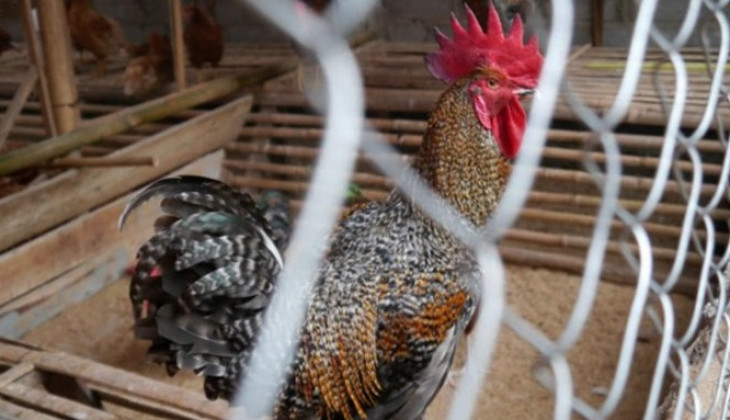As part of the 66th Anniversary of the UGM Faculty of Biology, the Faculty of Biology held a Virtual Book Review on Friday (18/6). In this book review, the faculty reviewed a book entitled ‘Characteristics and Genetic Diversity of Indonesian Local Chickens’ written by Prof. Budi Setiadi Daryono and Ayudha Bahana Ilham Perdamaian. This book reveals the diversity of local chicken species from various regions in Indonesia and the efforts to save these chickens from extinction.
Based on research, the chickens currently living in Indonesia come from only one type of chicken species, namely the red junglefowl or in Latin Gallus gallus, originally from Thailand. However, due to the diversity of ecosystems and local wisdom in Indonesia, the red junglefowl then evolved into various types of local chickens as we can see today. This evolution has occurred several tens or even hundreds of years ago.
Currently, Indonesia is reported to have 33 types of local chickens spreading throughout the archipelago. These chickens have specific and non-specific classifications. Specific classifications such as; Balengek from Sumatra, Pelung from Cianjur, Kalosi from Sulawesi, Gaok from West Java, and so on. The non-specific classification includes native chicken, which cannot be genetically classified because it comes from various chicken genes.
This local Indonesian chicken has an extraordinary richness of taste and is very specific. Therefore, consuming local chicken has become one of people’s hobbies, and this hobby is known to continue to increase over time. But unfortunately, this is bad news as the characteristics of local chickens have a low breeding rate, making it hard to keep up with community consumption rates. The local chickens are then expected to extinct.
“If we rely on native chickens and local chickens, which have low reproductive abilities, low growth, and low development abilities, they would run out,” said Prof. Budi in the book review seminar.
Therefore, the book by Prof. Budi Setiadi from the UGM Faculty of Biology also contains the story of a research journey related to ‘Gama Ayam’. Gama Ayam itself is an example of successful research in efforts to save local chickens from extinction.
Gama Ayam is a hybrid chicken or a cross between a local chicken and a chicken with a high breeding rate. In this case, these chickens are local Pelung chickens from Cianjur and Broiler Chickens. After researching for approximately 7 years, Gama Ayam has succeeded in becoming a “Super Chicken” which in 7 weeks can reach a weight of 1.5 kg, ready to be harvested.
Since 2016, the breeding and processing of Gama Ayam “Super Chicken” has been handed over to the assisted village community by the UGM Faculty of Biology, namely Beji Village in Gunung Kidul, Yogyakarta.
Source: https://www.ugm.ac.id/id/berita/21271-keragaman-ayam-indonesia-dan-pengembangan-ayam-super-ugm



